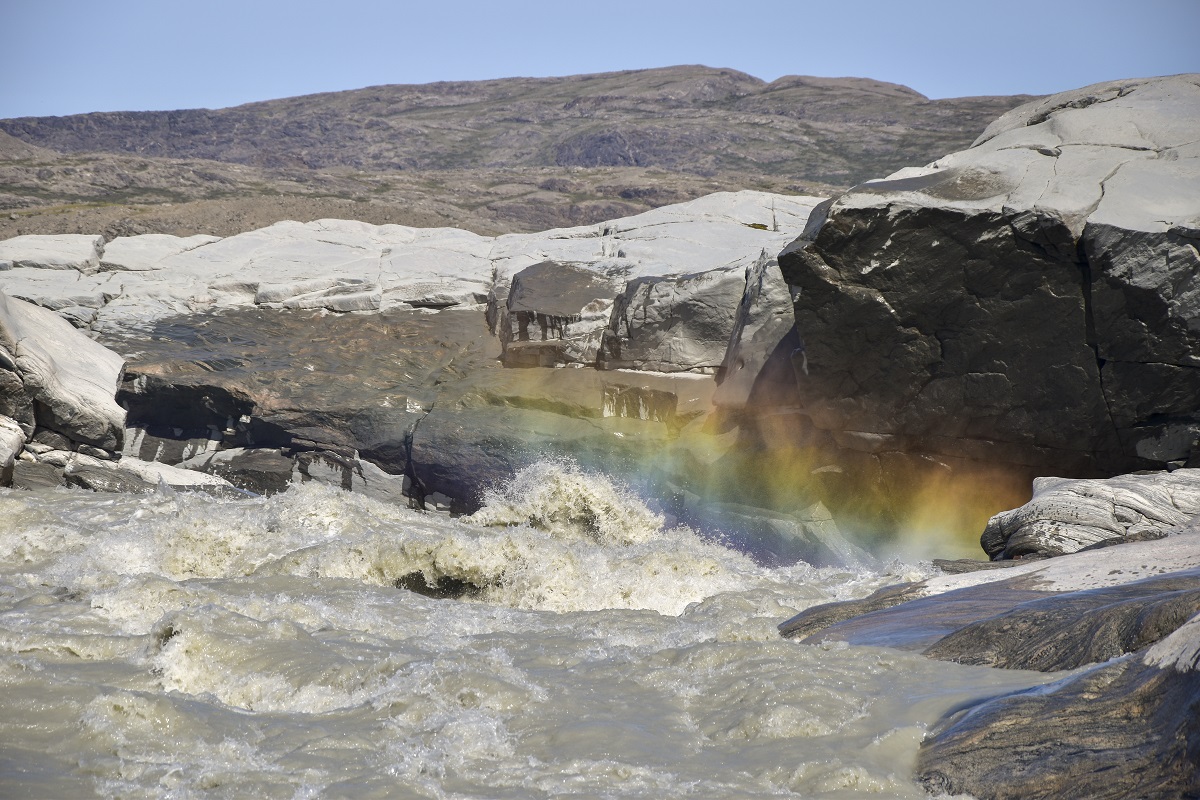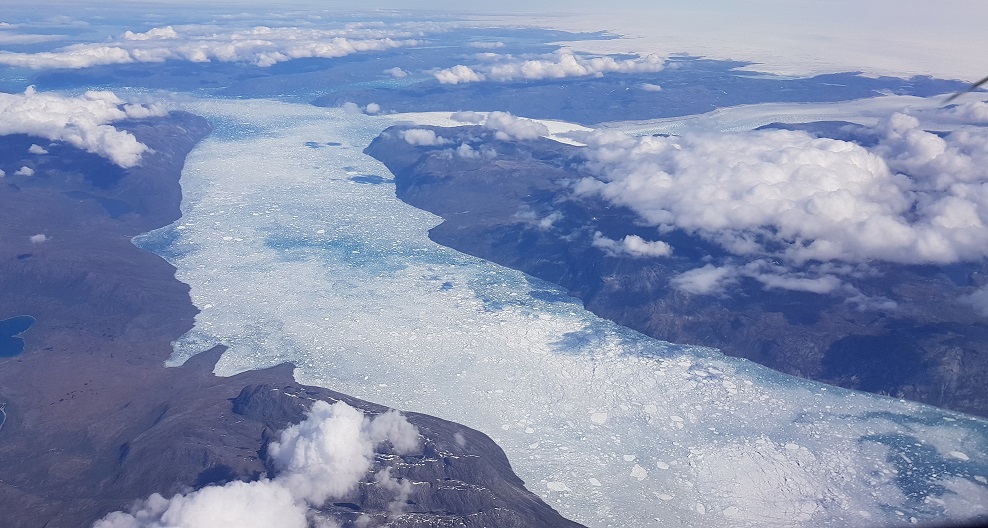
Researchers Find Greenland Glacial Meltwaters Rich in Mercury
UNITED KINGDOM / AGILITYPR.NEWS / May 24, 2021 / New research shows concentrations of the toxic element mercury in rivers and fjords connected to the Greenland Ice Sheet are comparable to rivers in industrial China, an unexpected finding raising questions about the effects of glacial melting in an area that is a major exporter of seafood.
“There are surprisingly high levels of mercury in the glacier meltwaters we sampled in southwest Greenland,” said lead author Jon Hawkings, a postdoctoral fellow at Florida State University and the GFZ German Research Centre for Geosciences. “And that’s leading us to look now at a whole host of other questions such as how that mercury could potentially get into the food chain.”
The international study, published today in Nature Geoscience, began at the University of Bristol’s Cabot Institute for the Environment, in the UK, where Hawkings collaborated with world-leading glaciologist Professor Jemma Wadham.
Initially, researchers sampled waters from three different rivers and two fjords next to the ice sheet to gain a better understanding of meltwater water quality from the glacier and how nutrients in these meltwaters may sustain coastal ecosystems.
One of the elements they measured for was the potentially toxic element mercury, but they had no expectation that they would find such high concentrations in the water there.
Typical dissolved mercury content in rivers are about 1 – 10 ng L-1 (the equivalent of a salt grain sized amount of mercury in an Olympic swimming pool of water). In the glacier meltwater rivers sampled in Greenland, scientists found dissolved mercury levels in excess of 150 ng L-1, far higher than an average river. Particulate mercury carried by glacial flour (the sediment that makes glacial rivers look milky) was found in very high concentrations of more than 2000 ng L-1.
Of course with any unusual finding, the results raise more questions than answers. Researchers are unclear if the mercury levels will dissipate farther away from the ice sheet and whether this “glacier” derived mercury is making its way into the aquatic food web, where it can often concentrate further.
“We didn’t expect there would be anywhere near that amount of mercury in the glacial water there,” said co-author Dr Rob Spencer, Associate Professor of Earth, Ocean and Atmospheric Science at Florida State University. “Naturally, we have hypotheses as to what is leading to these high mercury concentrations, but these findings have raised a whole host of questions that we don’t have the answers to yet.”
Fishing is Greenland’s primary industry with the country being a major exporter of cold-water shrimp, halibut and cod.
Co-author Jemma Wadham, Professor in Glaciology and Director of the Cabot Institute for the Environment at the University of Bristol, said: “We’ve learned from many years of fieldwork at these sites in Western Greenland that glaciers export nutrients to the ocean, but the discovery that they may also carry potential toxins unveils a concerning dimension to how glaciers influence water quality and downstream communities, which may alter in a warming world and highlights the need for further investigation.”
The finding underscores the complicated reality of rapidly melting ice sheets across the globe. About 10 per cent of the Earth’s land surface is covered by glaciers, and these environments are undergoing rapid change as a result of rising temperatures. Scientists worldwide are working to understand how warming temperatures — and thus more rapidly melting glaciers — will affect geochemical processes critical to life on Earth.
“For decades, scientists perceived glaciers as frozen blocks of water that had limited relevance to the Earth’s geochemical and biological processes,” Dr Spencer said. “But we’ve shown over the past several years that that line of thinking isn’t true and this study continues to highlight that these ice sheets are rich with elements of relevance to life.”
Hawkings also said it was worth noting that this source of mercury is very likely coming from the local rock itself, as opposed to a fossil fuel combustion or other industrial source. That may matter in how scientists and policy makers think about the management of mercury pollution in the future.
“All the efforts to manage mercury thus far have come from the idea that the increasing concentrations we have been seeing across the Earth system come primarily from direct anthropogenic activity, like industry,” Hawkings said. “But mercury coming from climatically sensitive environments like glaciers could be a source that is much more difficult to direct manage.”
Hawkings' co-authors come from an international team based in the United States (USGS, Woods Hole Oceanographic Institute, University of California Santa Cruz, Brigham Young University), United Kingdom (University of Bristol, University of Glasgow), Czechia (Charles University), Norway (UiT The Arctic University of Norway. UiO University of Oslo), Greenland (Greenland Climate Research Centre) and the Netherlands (Royal Netherlands Institute of Sea Research).
The fieldwork was supported by grants through the Leverhulme Trust and the UKRI’s Natural Environment Research Council. Jon Hawkings was also supported by a European Commission Horizon 2020 Marie Sklodowska-Curie Actions Fellowship. Part of the research was conducted at the Florida State University-headquartered National High Magnetic Field Laboratory, funded by the National Science Foundation and the state of Florida.

Caption: Icebergs on Nuup Kangerlua, where part of the fieldwork was conducted.
Credit: Rue Perkins

Caption: A milky meltwater river laden with glacial flour (suspended sediments) flows downstream from Leverett Glacier in southwestern Greenland.
Credit: Marie Bulínová

Caption: Isortoq River which carries meltwater from Isunnguata Sermia glacier meanders through the Greenlandic landscape, sculped by previous ice ages. This one river extends more than 120 km into the ice sheet interior and carries more than 7 km3 of meltwater to the oceans every year.
Credit: Jon Hawkings

Caption: An aerial view of Nuup Kangerlua (fjord) and the glaciers that feed meltwater into it. This fjord receives approximately 20 km3 of meltwater from the ice sheet every year (equivalent to 8 million Olympic sized swimming pools of water).
Credit: Jade Hatton
Contacts
Kathleen Haughney
khaughney@fsu.eduFlorida State University Communications
Phone: +1 (850) 644-1489